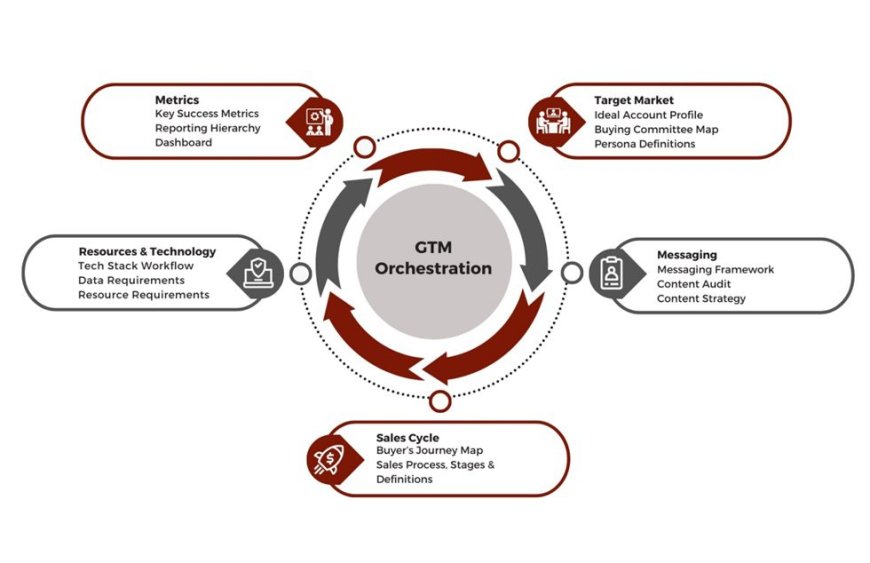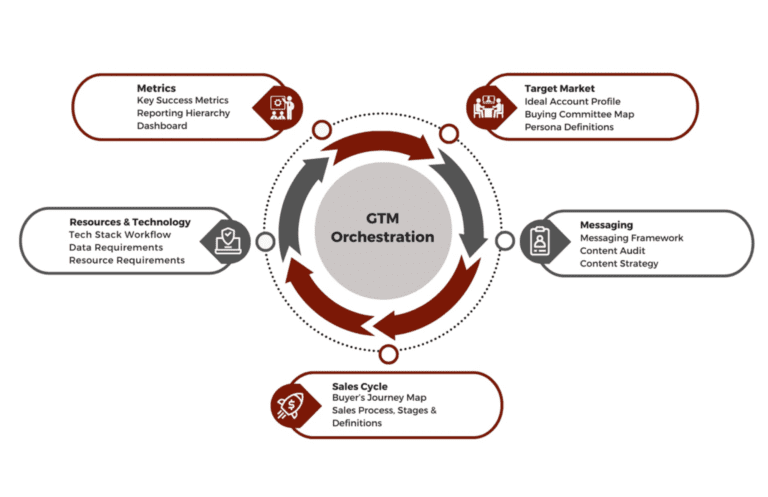Assessing Your Foundational Marketing Elements – Where do you stand?

By Brenna Lofquist, Client Services Operations Manager at Heinz Marketing
The Predictable Pipeline Method is the core of the work we do at Heinz Marketing. It’s comprised of five core values that result in data-driven, buyer-centric marketing campaigns, sales initiatives, and account-based marketing programs. These are the foundation of your go-to-market approach. All of the pieces work together to provide a holistic approach in understanding your organization’s needs as well as the needs of your target audience.
For each client we conduct discovery interviews, review existing documentation, and provide an assessment using our Predictable Pipeline Maturity Model. It’s basically a scorecard and helps us align with the client on their current state.
Before we get into how to assess your foundational elements, let’s dive into the model in more detail.
The Predictable Pipeline Method
Below is the Predictable Pipeline Model that highlights the five core values that power your GTM approach.

Target Market
This pillar sits at the beginning of the model because you need to understand your target audience before you can do anything else. Target Market is comprised of Ideal Account Profile, Buying Committee, and Personas.
Messaging & Content
Effective messaging demands a solid grasp on the fundamentals. Messaging and platforms change often, but the core product or solution promise remains the same. Your messaging should create confidence among your target accounts and buying committee members.
Messaging goes hand in hand with content. Once you know what to say, you need to convey that message in a format that will resonate with your target audience. Content is the easiest way to educate prospects about the problems your organization solves. Developing a content strategy ensures that you’re developing unique and tailored content for your audience.
sales cycle
Sales is a key component because without alignment between marketing and sales, you can’t be successful and reach your revenue goals. We review the sales process, stages, and definitions. Sales should be focused on the right activities to drive efficiency and alignment, ultimately accelerating your pipeline.
This pillar also includes a buyer’s journey map where we document the following for each stage of the journey: which buying committee members are involved, pain points and solution messaging, content, channels, and more.
resources & technology
Technology is the backbone of the model because without it, nothing would really work. We need to make sure you have the right tools and technology to support your efforts. Conducting a tech stack audit is crucial in determining the gaps, wasted resources, fragmented workflows, and data inconsistencies.
metrics
Everything comes together at the end with metrics. You need to understand the impact of your efforts so you can course-correct and protect your ROI in the long run. Developing a metrics framework to understand what needs to be tracked to determine success and then showcasing those results in a visual way whether that be reports or dashboards.
gtm orchestration
All of the Predictable Pipeline values are combined to provide the results-driven approach that creates predictable growth. You can think of GTM Orchestration as the “how”. How are you going to take all the foundational elements and use them to develop a campaign or program to take to market.
Assessing Your Foundational Marketing Elements
Now that you have an understanding of the Predictable Pipeline Model it’s time to see where you stand. Below is the Predictable Pipeline Maturity Model that we use with each client to assess where they are at. For each value we have “score” definitions from Initial to Optimized, which is the ultimate goal.

As a first step you need to gather any documentation or materials for each value, so you can review what you have currently. For us at Heinz Marketing, each core value has it’s own set of documentation that should be used when developing GTM strategies.
After you have gathered everything, it’s time to figure out how you would score yourself using the maturity model. Using the score definitions for each core value, determine, give your organization a score for each one.
Be critical and don’t sugar coat anything. Very rarely do we see an organization at Optimized, let alone Managed. The goal is to understand your current state and then identify the gaps and what needs to be done to get to the next score. Don’t set a goal to reach Optimized and instead set a goal to reach the next score. These foundational elements take time to develop and you want to make sure you’re testing, refining, and optimizing.
Let’s take messaging as an example. You should be talking to customers and researching your buying committee to understand their pain points and which solution messages will resonate with them at each stage of the buying journey. Then take that messaging to market and see how it performs. Are certain personas engaging with one message over another? Take those insights, refine your messaging, and test it again!
In summary
Developing your foundational elements is a marathon not a sprint. Take the time to understand where your organization is at and set goals for where you’d like it to be. Talk to your customers and the people in your organization that interface with customers, conduct research, and collaborate with others in your organization—it’s a team effort! Lastly, test test test (can’t stress that enough).
Interested in discussing the Predictable Pipeline Method more or want to understand where your organization stands? Reach out for a free consultation with one of our experts.
The post Assessing Your Foundational Marketing Elements – Where do you stand? appeared first on Heinz Marketing.
What's Your Reaction?
 Like
0
Like
0
 Dislike
0
Dislike
0
 Love
0
Love
0
 Funny
0
Funny
0
 Angry
0
Angry
0
 Sad
0
Sad
0
 Wow
0
Wow
0






























![How Human Behavior Impacts Your Marketing Strategy [Video]](https://contentmarketinginstitute.com/wp-content/uploads/2025/03/human-behavior-impacts-marketing-strategy-cover-600x330.png?#)





